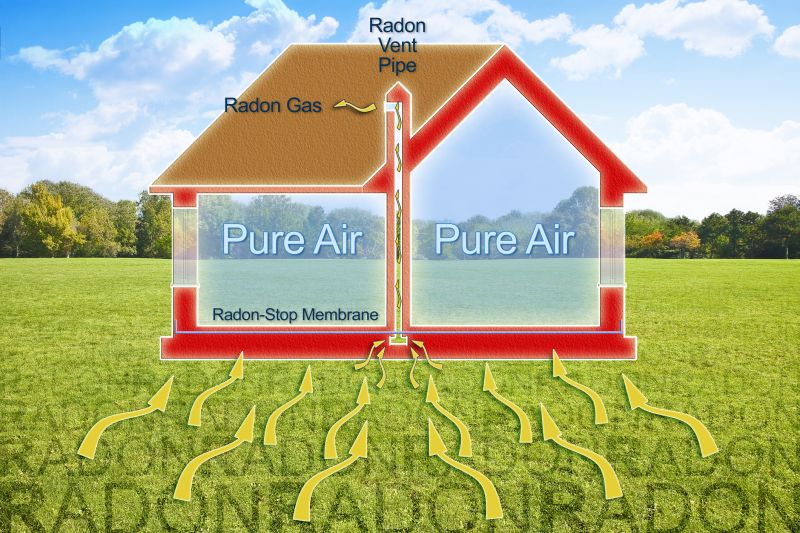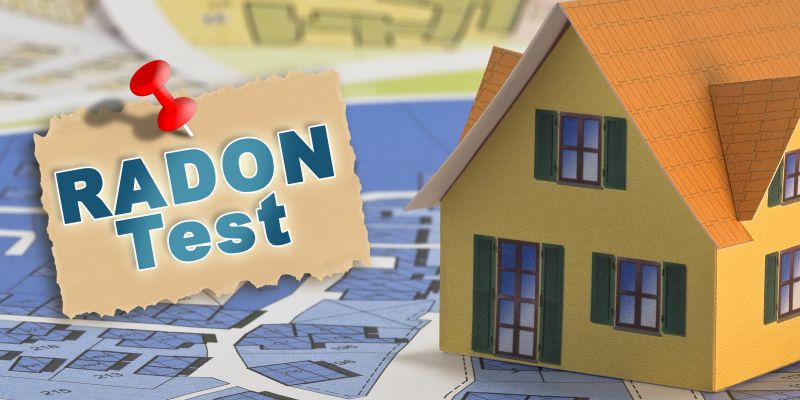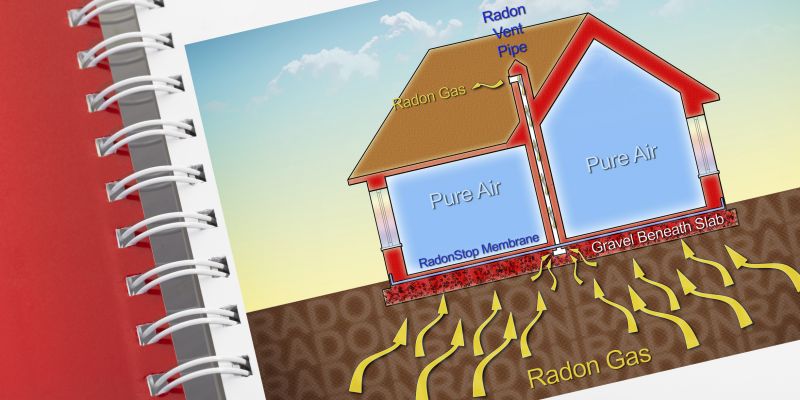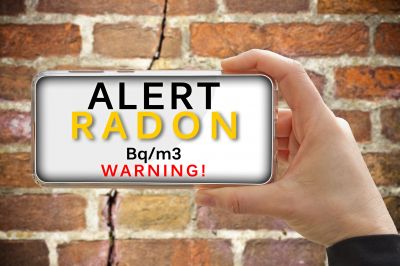Get Radon Gas Abatement in Stamford, CT
Radon Gas Abatement services help property owners in Stamford, CT, reduce radon levels through testing and mitigation projects like venting systems and sealing cracks.
Radon gas abatement is an important consideration for property owners in Stamford, CT, especially for those planning to buy, sell, or update their homes and commercial spaces. Elevated radon levels can pose health concerns, making professional mitigation a practical step to ensure a safer indoor environment. By exploring options for radon reduction, property owners can compare services offered by local contractors who specialize in this work, helping them make informed decisions about safeguarding their properties.
This site helps connect Stamford residents with experienced service providers capable of handling radon abatement projects. Whether you're assessing the need for mitigation or preparing to undertake a property improvement, reviewing local options can provide clarity on the available solutions. Keep reading to learn more about how local contractors can assist with radon reduction efforts tailored to your property’s needs.
- Residential Radon Mitigation - homeowners in Stamford neighborhoods may need this service if radon levels are found to be elevated in their homes.
- Basement Radon Reduction - properties with finished or unfinished basements in nearby towns might require abatement to ensure safe indoor air quality.
- New Construction Radon Testing - builders and developers constructing new homes in Fairfield County may seek radon mitigation to meet safety standards.
- Radon Inspection for Real Estate Transactions - buyers or sellers in the Stamford area might need testing and mitigation services during property transactions.
- Radon System Maintenance and Repairs - existing radon mitigation systems in local homes may need servicing to maintain optimal performance.



Radon gas abatement services involve identifying and reducing the levels of radon gas inside a property. Radon is a naturally occurring radioactive gas that can seep into homes through cracks in the foundation, gaps around pipes, or other openings in the building's structure. Service providers typically perform tests to measure radon levels and then implement mitigation systems, such as venting pipes and fans, to safely redirect radon gas away from living spaces. This process helps ensure that indoor air quality remains safe and reduces potential health risks associated with long-term radon exposure.
Radon gas problems are often discovered during home inspections, especially when purchasing a new property or as part of routine health and safety checks. Elevated radon levels can lead to increased health risks, including lung cancer, particularly for residents who spend significant time indoors. Radon abatement services are designed to address these concerns by installing systems that effectively lower radon concentrations. Homeowners who notice a musty smell, have a basement, or live in areas known for higher radon levels may find these services particularly beneficial.
Properties that typically require radon mitigation include single-family homes, multi-family residences, and certain commercial buildings. Homes with basements or crawl spaces are especially vulnerable because these areas often have more direct contact with the ground, where radon originates. Newly built homes may also need radon testing and abatement if initial levels are high. Radon mitigation can be a crucial step for homeowners in regions where radon levels are known to be elevated, helping to create a healthier indoor environment.
If radon levels are a concern, it’s important to contact experienced local contractors who specialize in radon gas abatement. These professionals can conduct thorough testing and recommend appropriate mitigation strategies tailored to the specific property. By working with trusted service providers, homeowners can ensure that their indoor air quality is improved and that their living spaces are safer from the risks associated with radon exposure.
The overview below groups typical Radon Gas Abatement projects into broad ranges so you can see how smaller, mid-sized, and larger jobs often compare in Stamford, CT.
In many markets, a large share of routine jobs stays in the lower and middle ranges, while only a smaller percentage of projects moves into the highest bands when the work is more complex or site conditions are harder than average.
Smaller Repairs - Typical costs for minor radon mitigation fixes range from $250-$600. Many routine repairs fall within this middle range, depending on the home's size and the extent of the work.
Standard Radon Mitigation System - Installing a basic radon reduction system usually costs between $1,000 and $2,500. Most homes in the area fall into this cost band, with fewer projects reaching higher amounts.
Full System Replacement - Replacing an existing radon mitigation system or handling more complex setups can range from $2,500 to $4,500. Larger or older homes may push costs into the higher end of this spectrum.
Comprehensive Abatement Projects - Larger, customized radon abatement solutions for extensive or unique properties can exceed $5,000. These projects are less common but necessary for certain high-risk or challenging environments.
Actual totals will depend on details like access to the work area, the scope of the project, and the materials selected, so use these as general starting points rather than exact figures.
Indoor Air Quality Improvement - local contractors often handle projects that involve ventilation system upgrades and air testing, skills relevant to radon mitigation efforts.
Basement Waterproofing - these projects require understanding of soil conditions and moisture control, which are also important considerations in radon gas reduction strategies.
Foundation Repair - foundation stabilization involves soil analysis and structural planning similar to those used in radon mitigation system installation.
Ventilation System Installation - expertise in designing and installing ventilation solutions is essential for effective radon gas reduction in homes and buildings.
Soil Gas Testing - professionals conducting soil gas assessments possess skills directly applicable to identifying radon entry points and planning abatement solutions.
Home Inspection Services - inspectors trained in building integrity and indoor air issues often perform radon testing as part of comprehensive evaluations.

When evaluating service providers for radon gas abatement, it’s important to consider their experience with similar projects within the local area. Homeowners should inquire about the types of properties the contractors have worked on and whether they have handled radon mitigation systems in homes comparable to their own. A contractor’s familiarity with local building codes, soil conditions, and typical challenges can influence the effectiveness and longevity of the mitigation system. By focusing on a provider’s track record in the community, homeowners can gain confidence that the pros understand the specific requirements of local homes and can deliver reliable results.
Clear written expectations are a key factor in choosing the right radon abatement service. Homeowners should look for providers who offer detailed descriptions of the scope of work, including the proposed system design, installation process, and any necessary modifications to the property. Having this information in writing helps ensure that both parties are aligned on what will be done and can prevent misunderstandings later. It’s also beneficial to ask for a straightforward explanation of any potential disruptions or preparations needed during the project, giving homeowners a clearer picture of what to expect throughout the process.
Reputable references and effective communication are essential when selecting a local contractor for radon mitigation. Homeowners can ask service providers for references from past clients who had similar work completed, to gain insights into their experiences and satisfaction. Good communication involves timely, transparent responses to questions and a willingness to provide thorough explanations about the proposed system and procedures. This openness helps build trust and ensures that homeowners feel informed and comfortable with the chosen provider. It’s important to remember that this site introduces homeowners to local options and does not perform the work itself, so taking the time to evaluate these qualities can lead to a smoother, more confident decision-making process.
Property owners in Stamford, CT use Radon Gas Abatement services for practical projects around their homes and businesses. This guide focuses on everyday jobs and straightforward project options.


Radon gas abatement services are often sought by property owners in Stamford, CT, who are concerned about indoor air quality and potential health risks. Homeowners might notice a persistent, musty odor or experience increased radon levels during routine testing, prompting them to explore professional mitigation options. Whether preparing a home for sale or addressing long-standing concerns, many property owners turn to local contractors who specialize in radon reduction to ensure their living spaces are safer and compliant with recommended standards.
In addition, those renovating or purchasing older homes in Stamford may find radon abatement services helpful for reducing airborne radon concentrations. Real estate transactions sometimes include radon testing, and elevated levels can lead property owners to seek quick and effective solutions. Local service providers are available to assess, recommend, and implement radon mitigation systems, helping homeowners and buyers address indoor radon issues efficiently and confidently.
What is radon gas abatement? Radon gas abatement involves installing systems or making modifications to reduce radon levels inside a home or building, helping to improve indoor air quality.
How do local contractors typically perform radon mitigation? They usually install venting systems that safely redirect radon from beneath the foundation to the outdoors, minimizing indoor radon concentrations.
Is radon testing necessary before considering abatement? Yes, testing helps determine radon levels, which guides the need for and extent of mitigation services provided by local contractors.
What types of properties can benefit from radon gas abatement? Residential homes and certain commercial buildings with elevated radon levels can benefit from mitigation services offered by local service providers.
How can I find qualified local contractors for radon abatement? This site can help connect with experienced local service providers who specialize in radon mitigation and abatement services in the area.
Radon Testing Services - Property owners can schedule radon testing to identify elevated gas levels before making remodeling or renovation decisions.
Radon Mitigation System Installation - Homeowners can work with local contractors to install systems that reduce radon levels and improve indoor air quality.
Basement Radon Prevention - Homeowners with finished or unfinished basements can explore mitigation options to prevent radon infiltration and protect indoor spaces.
Indoor Air Quality Assessments - Property owners can include radon evaluations as part of regular air quality checks to maintain a safe living environment.

If you are thinking about Radon Gas Abatement for a property in Stamford, CT, this guide is meant to help you understand the work, the typical project types, and how different options might fit your plans.
When you are ready, you can use the quote form on this page to share a few details about your project. From there, local pros can review the basics and respond with options that match what you have in mind.
